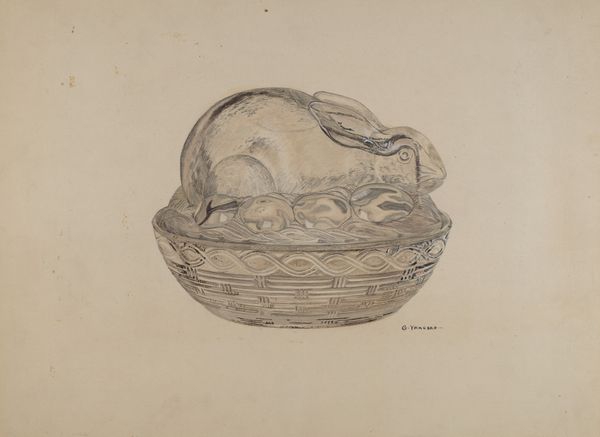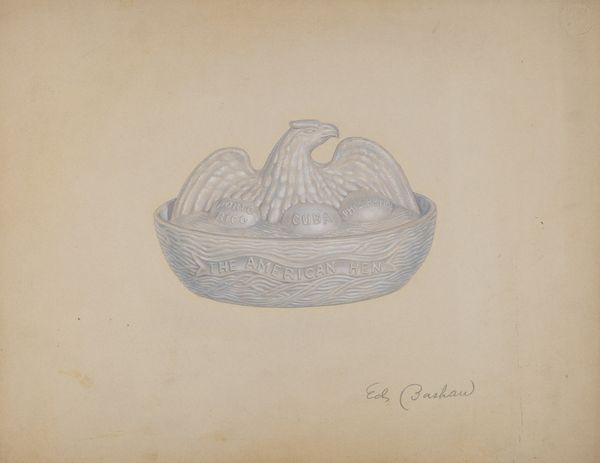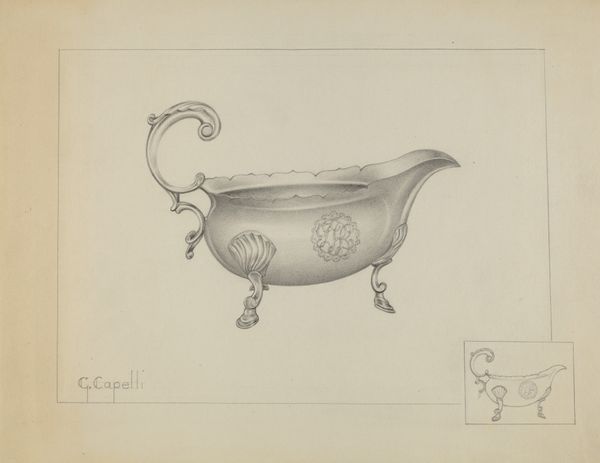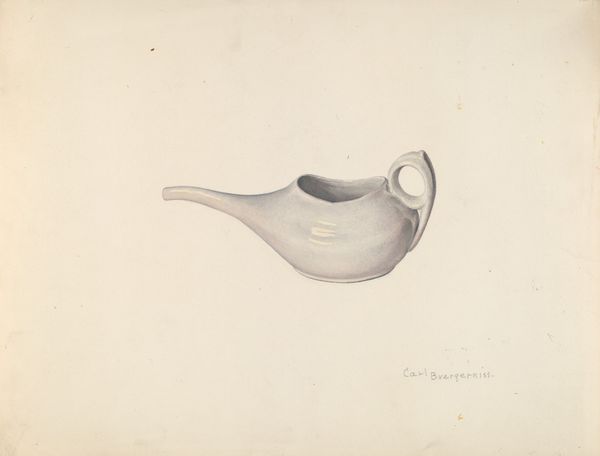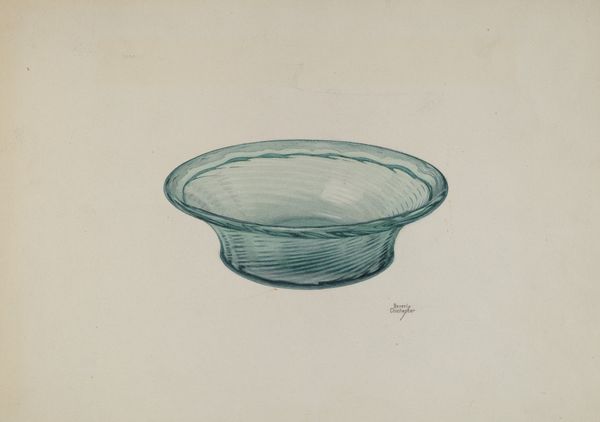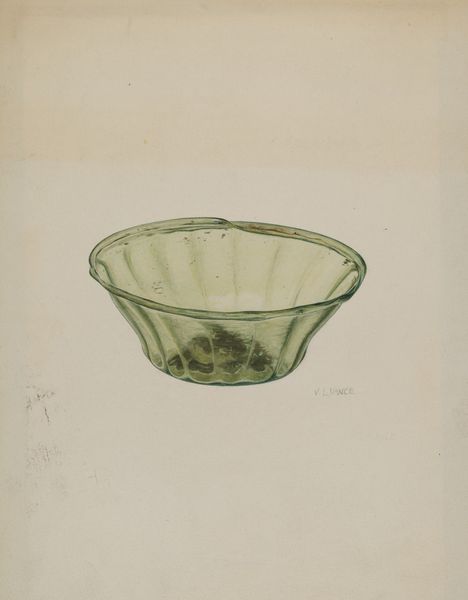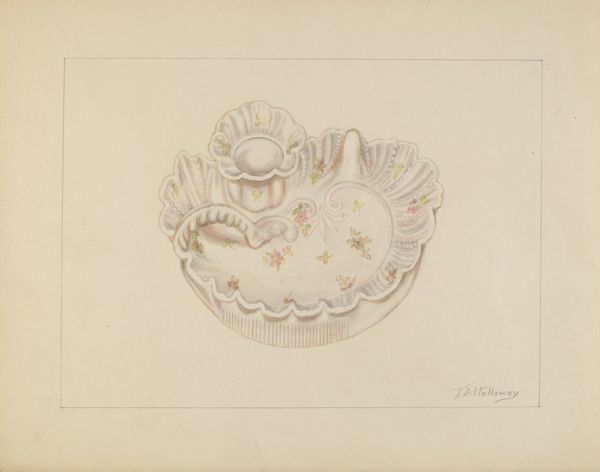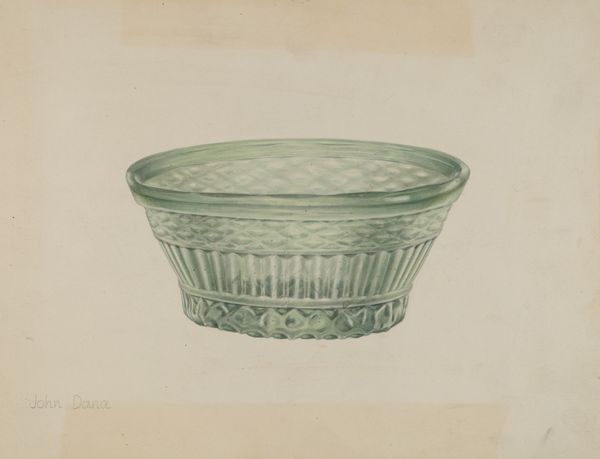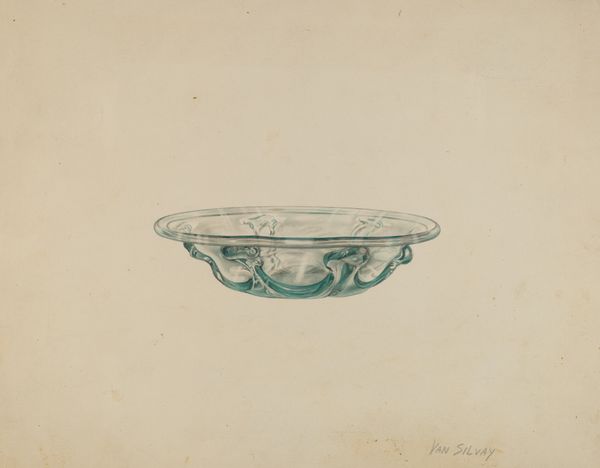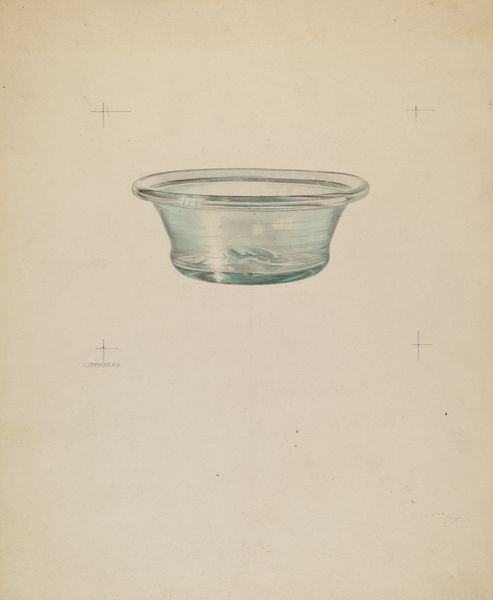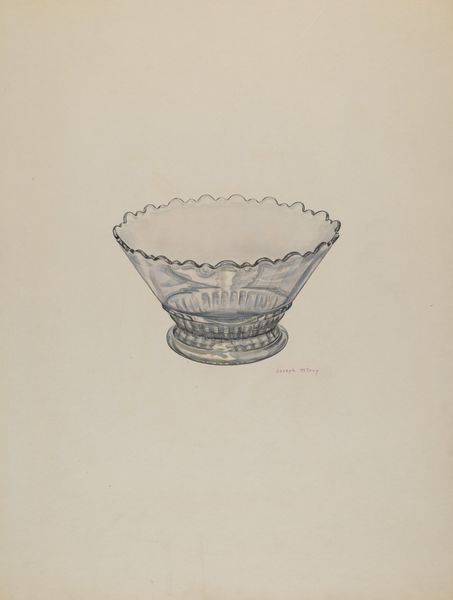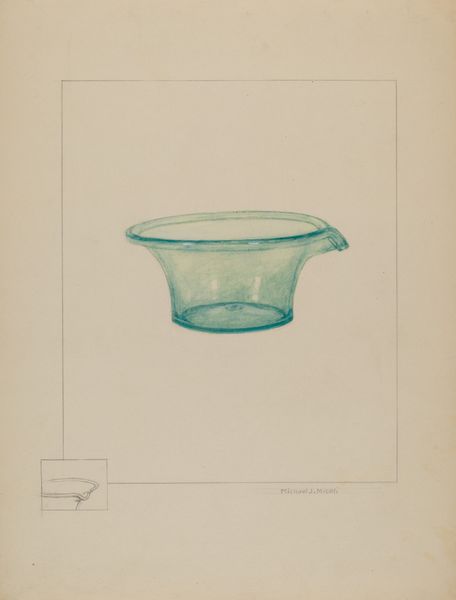
drawing, pencil
#
pencil drawn
#
drawing
#
pencil drawing
#
pencil
#
academic-art
#
watercolor
Dimensions: overall: 23 x 28 cm (9 1/16 x 11 in.)
Copyright: National Gallery of Art: CC0 1.0
Editor: This is LeRoy Griffith’s "Covered Dish (Duck)," created around 1938. It appears to be a drawing using pencil, and perhaps watercolor. It's surprisingly calming. I'm intrigued by the level of detail, especially in the woven texture of the basket. What formal qualities stand out to you in this drawing? Curator: Formally, the emphasis lies in the interplay of line and texture. The delicate pencil strokes delineate the form of the duck and the intricate weave of the basket. Notice how Griffith uses subtle tonal variations to create a sense of depth and volume, despite the limited color palette. The light seems evenly distributed, highlighting the meticulous craftsmanship. Editor: The basket weave does draw my eye. The texture contrasts smoothly against the sleek form of the duck. Why this focus on a domestic object, do you think? Curator: Indeed. Consider the geometry in play here. The circular base grounds the form, offering stability. The duck itself, while organic, is simplified into elegant curves and planes. Griffith seems less interested in realistic representation and more interested in the formal arrangement of shapes and textures. How does the symmetry, or asymmetry, impact the overall composition, in your view? Editor: Good point. I didn’t immediately register the asymmetry. I think it gives the piece a kind of subtle dynamism, preventing it from feeling static or overly formal. Curator: Precisely. And think about the implied tactility. While it is a two-dimensional drawing, the textures invite us to imagine feeling the smooth ceramic of the duck and the rough weave of the basket. A tension is created through those textures. Editor: That's a level of visual analysis I hadn't considered! I see now how focusing on these intrinsic qualities allows for a richer understanding, devoid of cultural context. Thank you! Curator: You're welcome! Approaching art through form opens pathways to perception we often overlook.
Comments
No comments
Be the first to comment and join the conversation on the ultimate creative platform.
